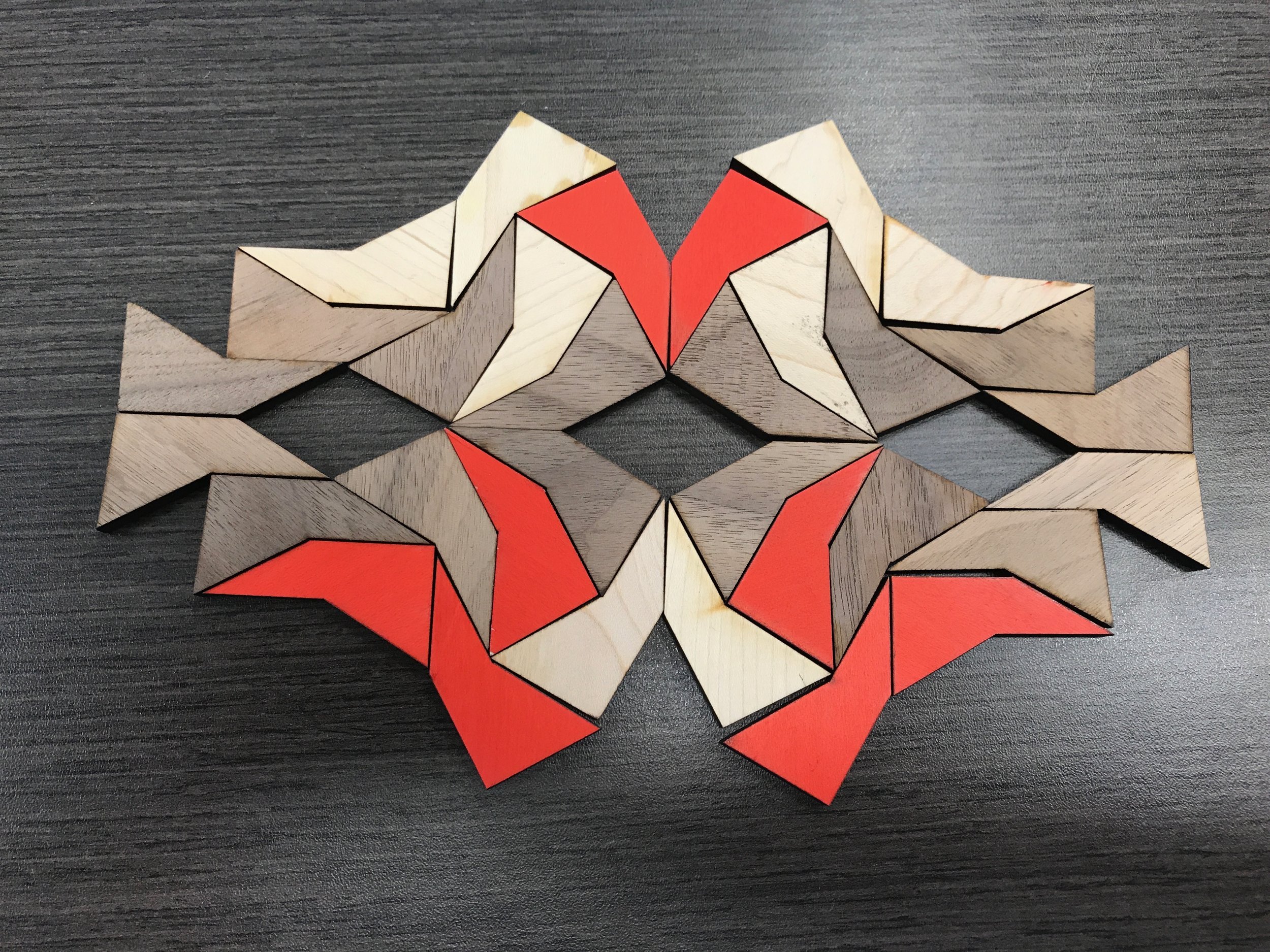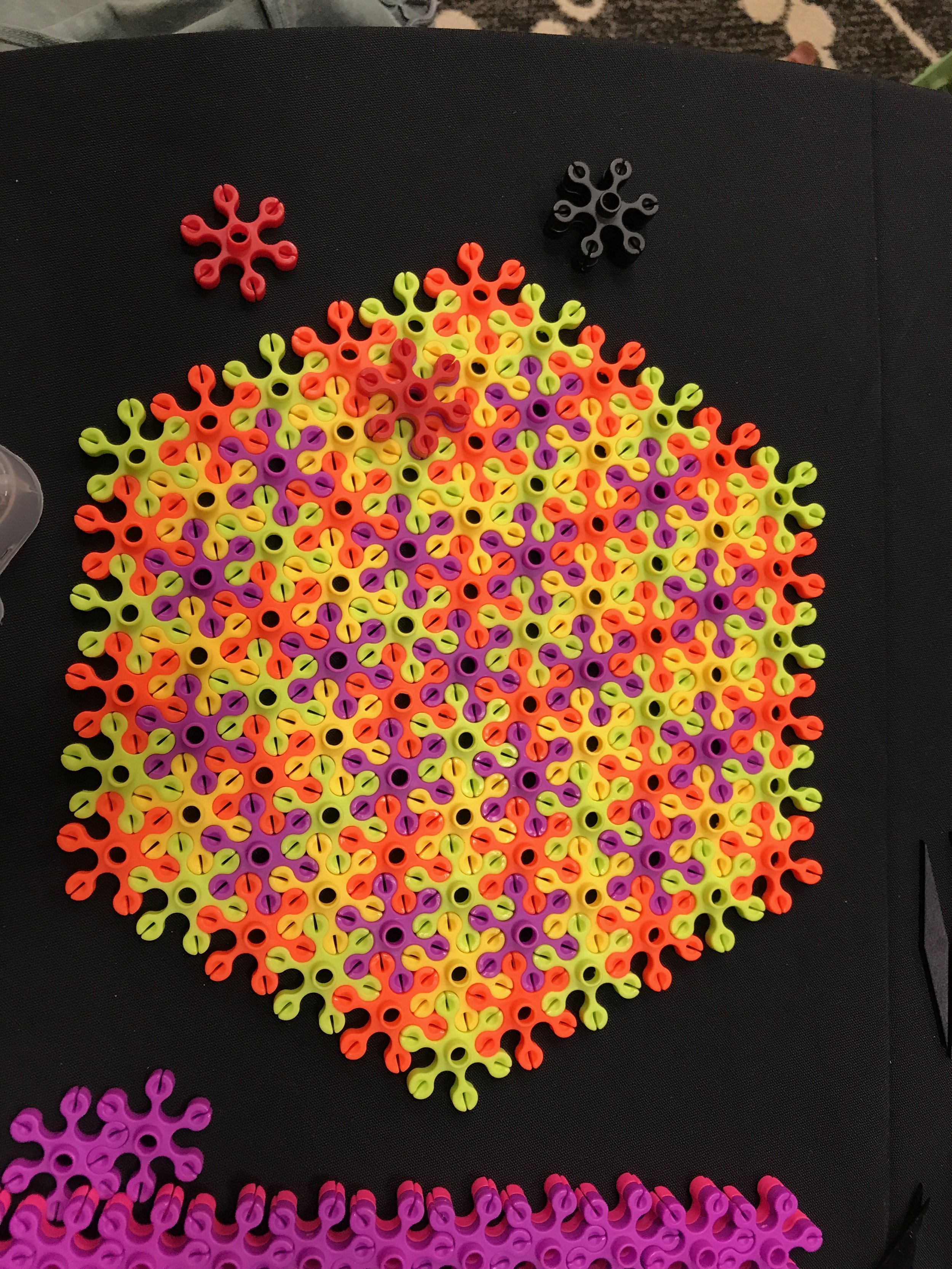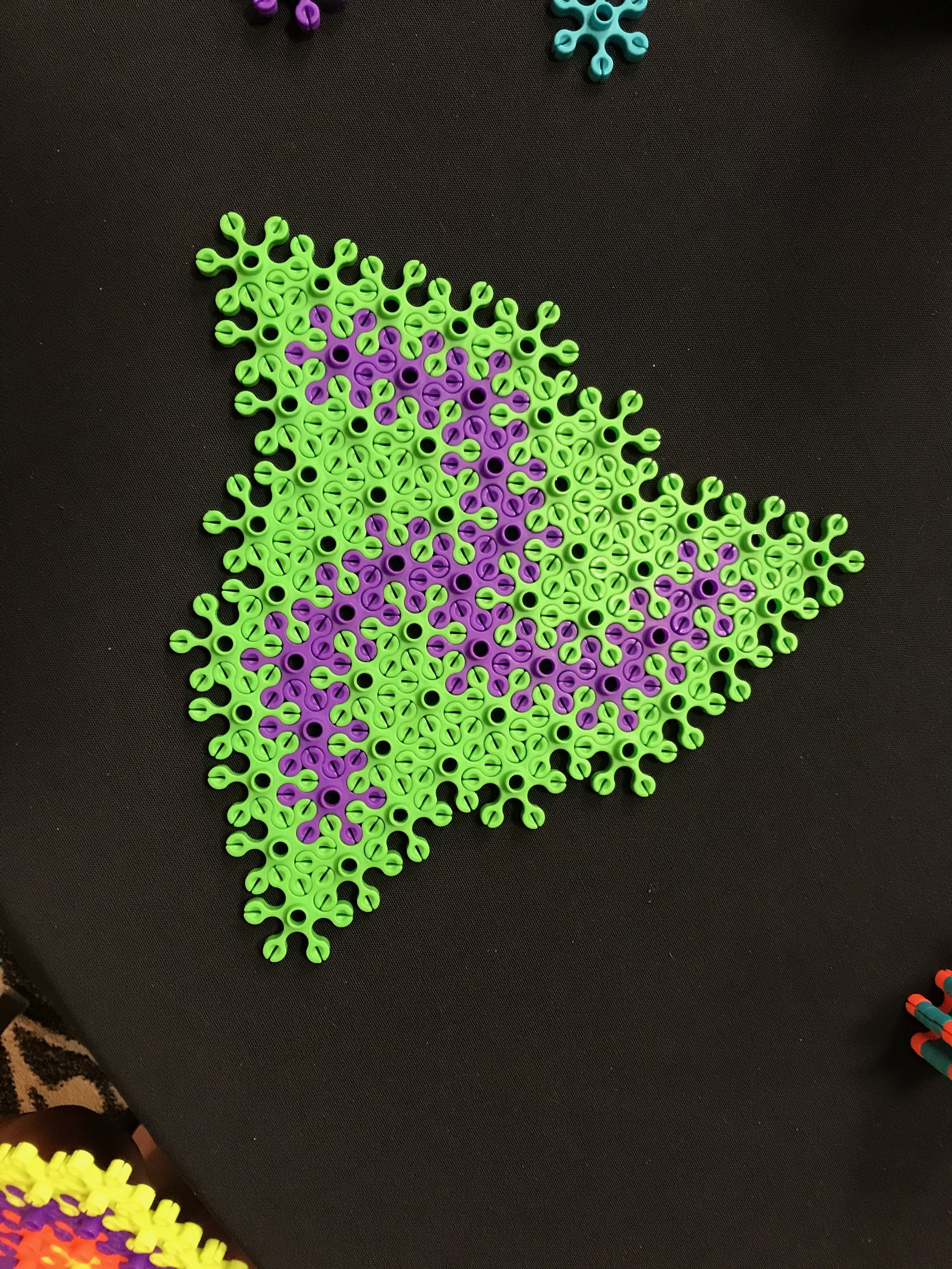Over the past month, I have been playing lots of mathy games for an upcoming project. My favorite of those games is Blokus. Essentially, Blokus is a game where you compete for space. Each player places these Tetris-looking pieces on the board, touching only at the corners, until everyone runs out of room and counts up the pieces they have left. It's a little more complicated than that, but not much. That's part of why I love the game. Blokus is simple to understand, fun to play with kids and adults of all ages, and strategically complicated enough to keep me engaged over and over.
Most importantly, the pieces are really fun to play with. While you wait for your turn, you play around with the pieces, forming squares, rectangles, and all sorts of other creative shapes. Even if there were no game element, I'd still be in love with the Blokus pieces as a tool for mathematical exploration.
As I played with the game, I realized that the pieces were all the configurations that can be made from 1, 2, 3, 4, and 5 squares. I looked it up and yep, there's a whole branch of math about these shapes (which are known as polyominoes).
So then...
I was at Twitter Math Camp in Atlanta this summer, soaking in all the math and conversations I could after five years of pressing my face against the window of Twitter. My favorite part of TMC was definitely building mathematical objects. I played with Christopher Danielson's Versatiles during his session on Math on a Stick. I made patterns from double Truchet tiles that Andrew Browning-Couch made. I played with Justin Aion's hexagons, both homemade and raided from a dozen local Targets. I made a box with the #origamipals. I helped a huge group of teachers take over the hotel lobby and make a Sierpinski gasket with Malke Rosenfeld. I helped assemble some shape I can't even pronounce or understand with Annie Perkins, Edmund Harriss, and a ton of other folks. Below, you can browse through some things built by myself and others over the course of the weekend.
I had a lot of fun building things. And while I was building things, I started thinking back to Blokus. I wondered: What if instead of using squares, you built all the possible configurations of 1, 2, 3, 4 or 5 hexagons?
I started sketching in the middle of another presentation and pretty soon had found all 28 configurations. Success! Then I went searching around the internet and discovered that there are actually 34 possible configurations. Also, once again there is an existing set of mathematical discoveries about these shapes, known as polyhexes.
So I am sketching these shapes at TMC and just itching to get my hands on them. I was complaining about this to Megan Schmidt, when she suggested that I use hexagonal mosaic tiles that people often use in their bathrooms to build the shapes. As soon as I got home from TMC, I went straight to Lowe's.
First, I just cut the pieces out of the mesh, just to get a sense of what they all looked like. This wasn't a great set of toys because the mesh gaps, while useful for catching grout, don't make for clean lines and tight fits. Also, the pieces weren't reversible, which was problematic.
Eventually I settled on an approach to building them. First I glued two tiles back to back so that the tiles would be reversible. Then I started gluing pairs of tiles together, letting them dry, and slowly building my polyhexes. Finally, this morning I was done! I pulled them out with my kids, age 4.9 and 2.5, and let them go to town.
First, the bad news. The adhesive is pretty good, but not good enough to withstand a toddler. I think when I build my next set (and you know I am already jonesing for another set) I will use the mesh from the mosaic tiles as a way to help the pieces keep their structure. I might glue one layer together, glue the mesh on top, and then place the second layer over the mesh. Hopefully that will give the pieces a bit more endurance.
But the good news is that THESE ARE AWESOME. Just like the Blokus pieces, they simply call out to be combined. The pieces slide together in such a pleasing way, at least when I glued them accurately, and they're easy enough for my son and daughter to construct huge shapes with. They're a little uneven in places and have glue stains on them and are already falling apart a bit, but I love them. They are my babies.
I have an inkling of a game mechanic that might make these pieces into a fun game. But even if I don't find a way to gamify my polyhexes, I will still be so happy to have these pieces to play with and learn from.
So thank you, Christopher Danielson, Megan Schmidt, Annie Perkins, Malke Rosenfeld, and anyone else who shares their trials and errors in making mathematical objects and mathematical art. You guys gave me the courage to turn this idea into a real thing. You helped me find what I love and do more of that.













